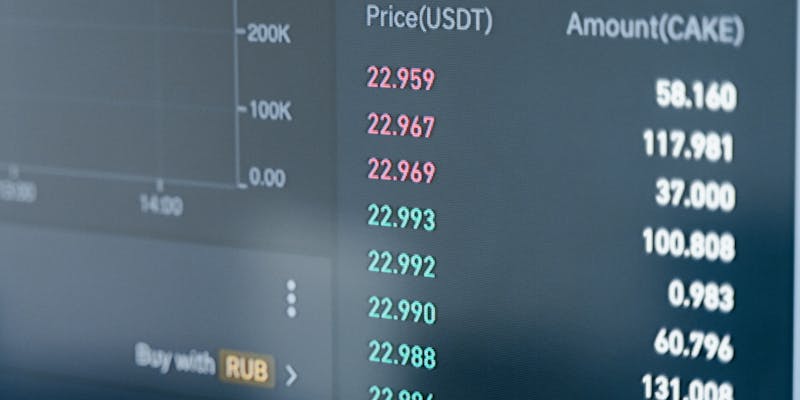What is Risk Reversal? A Beginner's Guide to Options and Hedging
Nov 18, 2024 By Elva Flynn
Risk management is the foremost necessity in financial markets. As far as options trading is concerned, it is a matter of absolute importance for the traders. One method adopted by traders is called risk reversal, through which market exposure can be taken without actually committing the capital or purchasing the asset outright. In this context, the trader buys and sells particular options to mimic positions in light of the market outlook that he holds, which is bullish or bearish.

This article will break down the essentials of risk reversal, explaining what it is, how it works, and when it may be helpful. By the end, you'll have a firm grasp of this strategy, along with real-life examples demonstrating potential benefits and risks.
What Is Risk Reversal?
In fact, risk reversal is nothing but a call-and-put options strategy in which an investor combines both options to view the future price of a particular asset. He sells a put option for income and buys a call option for potential profit because he expects the price to move in the anticipated way.
This is very popular with both individual and institutional investors wishing to keep in touch with the market without fully committing their assets. Simply, it provides cost control in preparing for some market shifts.
How Does Risk Reversal Work?

Risk reversal can assume both bullish and bearish forms according to the market outlook. Here's how both work:
Bullish Risk Reversal
If an investor expects the price to increase, a bullish risk reversal can be entered into by buying a call, which makes profits if the price goes higher, and selling a put. Selling the put yields income, reducing the net cost of the call option. The desired event for the investor would be that the stock price rises higher, making the value of the call option more desirable.
However, if the price falls, he will have to purchase at the put's strike price and might incur a loss. Thus, this approach is for traders who can surely predict upward movement.
Bearish Risk Reversal
When the investor feels the asset's value would depreciate, he establishes a short position in the option series with a simultaneous long position in a put option against an existing short call. Therefore, he reaps upside protection by way of the bearish risk reversal from selling his call while generating funds toward the cost of purchasing a put.
If the price decreases, the put rises in value, and profits are generated. On the other hand, if the price goes up, the trader has to sell at the strike price of the call, which will naturally cap his profit. That way, they are able to hedge against a market decline without going short of the underlying security.
Examples of Risk Reversal
This explanation is easier to understand with the help of a few practical examples of how risk reversal works. Let's walk through both a bullish and a bearish risk reversal scenario.
Bullish Example
Consider a trader, Alex, who believes that shares of XYZ Corp, currently trading at $100, will increase in the coming months. Alex buys a call option with a strike price of $105 and sells a put option with a strike price of $95. If the stock goes any higher than $105, then Alex will make money based on a call option; in the event that the stock falls below $95, Alex may buy this stock at that price to have the potential loss from there.
Bearish Example
Beth believes that the shares of ABC Corp, being priced at $120 currently, will go down. She buys a put for $115. This gives her the right to sell the stock at that price if it drops. In a move to counterbalance her premium, she sells a call for $125. As the price of ABC falls, so does the price of her put option. But if the share goes up beyond $125, she may be compelled to sell at this price, further caps her potential upside,
Benefits and Drawbacks of Risk Reversal
Risk reversals can be a very powerful means of managing exposure. Here, it's well known to understand what would happen on the pros against possible cons.
Benefits Risk Reversal
Cost Effectiveness: The fact that one can sell one option to finance another means capital outlay can be reduced cost-effectively.
Market Positioning: They can position themselves for the expected price moves without a direct investment using risk reversal.
Hedging Ability: It is a hedge because the investor will be exposed to either the upside or the downside of an asset's price without owning the whole asset.

Drawbacks of Risk Reversal
Potential Liability: In the event that the price of the asset moves against the position, investors will have to buy or sell the asset at a less favorable price, thus incurring potential losses.
Complexity: Risk reversal requires a good understanding of options, which makes it difficult for new traders to execute well.
Market Exposure: In case the market moves in the opposite direction of expectation, this strategy exposes the trader to potential losses with volatile assets.
Conclusion
Risk reversal allows for an organized way of playing market movements without the need to fully commit capital. This is done through the purchase of a call and sale of a put-or and vice versa, whereby investors are basically creating a synthetic position that represents their expectations about the market movements. Although this strategy can be helpful for traders looking to gain exposure without overspending, it is also accompanied by specific risks. There is a time and a place for using risk reversal, and an awareness of market movements will come in handy when it comes to its application.

Budgeting for a Trip

2024 Forex Trading Made Easy: Our Top Automated Software Picks

What are SPACs? (Special Purpose Acquisition Company)

The Corporate Transparency Act: How Small to Medium-Sized Businesses Can Adapt

Uncovering the Transfer-For-Value Rule in Insurance: A Layman's Guide

A Comprehensive Overview of Setting Up a Special Needs Trust

Navigating the World of Alternative Investments: A Comprehensive Guide

Margin Trading: Pros, Cons, and Is It Right for You?

Effective Tax Rate

